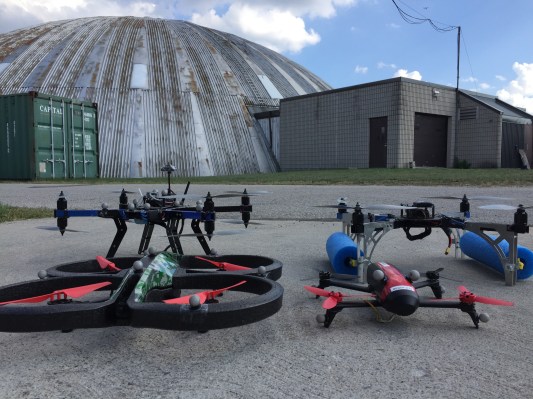If you want to learn how to build flying cars, then your options in terms of getting an education are kind of limited. Enter Udacity, the online education platform founded by Google self-driving car pioneer Sebastian Thrun. It’s now accepting applications for its Flying Car Nanodegree program, which it announced last year along with a new Introduction to Self-Driving engineering course.
The Flying Car Nanodegree is partly exactly what it sounds like, but in an interview Thrun admitted that the name is designed to ignite the pop culture imagination in addition to describing what you’ll get out of the program. For one, the ‘car’ designation for most flying vehicles isn’t entirely accurate, Thrun said in an interview – but the term does make sense in terms of explaining the opportunity represented by personal aerial transportation craft.
“While most people don’t see this as a reality yet, that your pizza gets flown in by drone, it would be a complete game-changer if your local store, your local Target, your local Walmart, would be able to deliver groceries to you via drones,” Thrun said. “The same is true for people transportation, and I really believe that we’re going to have a future at some point where everybody will fly every day[…] that realization, I predict will happen in the next few years.”
Course instructors for the Flying Car Nanodegree program include Thrun himself, who also has a startup dedicated to making personal aerial vehicles a reality (Kitty Hawk); as well as University of Toronto aerial robotics Professor Angela Schoellig; Kiva Systems founder and ETH Zurich Professor Raffaello D’Andrea; and MIT Professor and Google Project Wing founder Nicholas Roy.
[gallery ids="1589926,1589924,1589923,1589930"]
Thrun explained that while students can get component skills for building future autonomous aerial transportation vehicles, it’s currently very difficult to put together all the pieces into something comprehensive and specific to the field. It ends up being tremendously cross-disciplinary, and that’s where Udacity’s strengths at identifying very specific needs and building appropriate educational courses comes into play.
And even if in the immediate term it doesn’t look like any kind of flying car deployment will be a significantly meaningful part of anyone’s revenue picture, Thrun says we shouldn’t underestimate its potential impact, and its immediate importance to companies that are taking it seriously, including Amazon, Google and others. In fact, the Udacity CEO even believes that autonomous aerial vehicles will one day eclipse self-driving cars in terms of their importance in daily urban transportation.
“The most revolutionary vision of a self-driving car would be the ride sharing perspective, the one that Google and Uber has been working on, where an empty car comes to you,” Thrun said. “You’d probably cut the transportation costs of the American household in half with this ride sharing mobility service – but it only works without a driver inside. So Uber costs about $1.10 per mile, and if you drive a car yourself you spend about $0.60 per mile. You can, without too much work, get this down to about $0.30 per mile if the car comes to you unmanned. With a slight leap, if it comes to you and lifts you up in the air and drops you off somewhere else, you can reach the same economics – but without the [traffic] congestion.”
Udacity’s application process closes on February 7, and Self-Driving Car Engineers and Robotics Software Engineer Nanodegree program students, as well as graduates of Udacity’s Intro to Self-Driving Cars, will be guaranteed admission and the chance to enroll. Thrun says Udacity learned early on in its existence to responsibly gate admission so students don’t encounter material beyond their competence level, and the skills developed in those programs should equip applicants well to succeed here, too.
Udacity is making access to the nanodegree’s curriculum and two of its full courses available to prospective students, and the full program will occupy two 12-week terms with $1,200 in tuition due for each. During the first term, students will work on Udacity’s customers flight simulator on flight planning and control, and then in the second, they’ll focus on coordinating flight among various autonomous systems and eventually build a virtual “flying city” to put all the pieces together.
